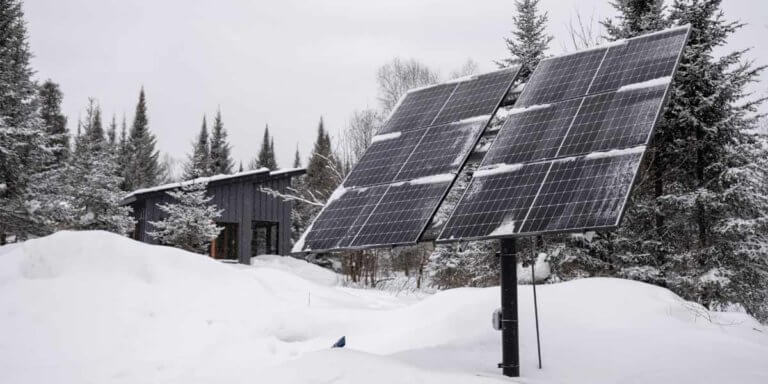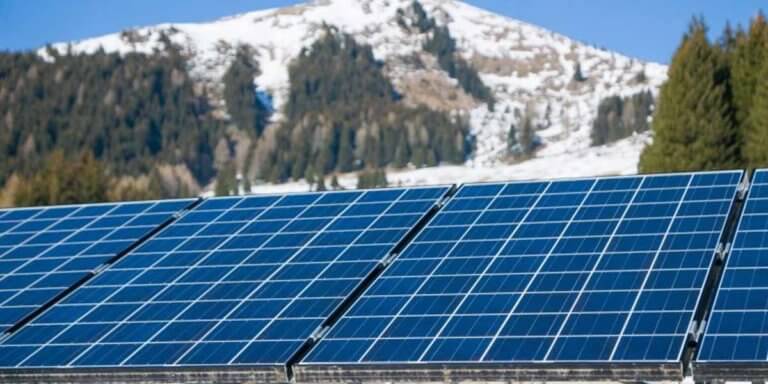How Many Solar Panels Do I Need To Power A Refrigerator?

The first thing that usually pops up into your mind after you decide to switch over to solar power is typically the concern surrounding cost-effectiveness. However, unlike the traditional source of electricity, solar power is indeed cheaper and, in many ways, more convenient than the former.
So, you certainly may wonder why solar power is cost-effective and how much power the home appliances like AC, T.V, etc. consume while using solar energy. For instance, let’s consider a refrigerator since it is one of the most essential and biggest home appliances that usually require a lot of power to run.
Now, how much solar power do I need to run a refrigerator? Let’s find out about the power consumption of a refrigerator in detail to understand the number of solar panels required to power the same.
How Many Solar Panels Do I Need to Power A Refrigerator?

1. How To Calculate Refrigerator Energy Requirement?
To calculate “how many solar panels do I need to power a refrigerator”, we first need to calculate the energy required by the refrigerator.
Different electrical appliances use different amounts of power to run and operate, distinguishing the kind of money put behind each of them. Similarly, unlike your regular small indoor lights, a refrigerator can consume a lot more power to function properly, depending upon a few factors such as the frequency of its usage, the quantity of food put in it regularly, and the type or model of the particular refrigerator.
Thus, to find out the amount of power required to run the refrigerator properly, you have to calculate how much energy it usually requires to function primarily. There are three ways of generating accurate results:
- The Direct Way: All manufacturers label their refrigerator models with an energy rating sticker on the fridge door, which is usually in kWh and may vary from anywhere between 200 kWh to 600 kWh. Thus, this is how you’re supposed to determine the watts of the refrigerator model. For example, if the annual energy rating is 365 kWh, you have to divide it by 365 days. Therefore, the result obtained will be 1kwh per day.
- The Indirect Method: In case you fail to find the energy rating label on the refrigerator, you should go ahead and find out the quoted power rating mentioned besides the product serial number. Fortunately, it is evaluated and added in watts for convenience.
- Multiplying the Voltage: Another way of doing this is by multiplying the voltage with the required amps of the refrigerator to obtain the value of power.
Now that we have the methods, the next step would be to calculate the number of hours you want your appliance to run per day to multiply the hours and the power, finally generating the required value. Thus, this value will determine the number of solar panels required to run your refrigerator.
2. Battery For Running A Refrigerator

Now, let’s come to the main thing. Portable Solar panels or any solar panel for that matter cannot work without direct sunlight hitting them in order for them to generate solar energy in return. This clearly paves the path for activating your refrigerator strictly during the hours in the daytime.
So, what about the nights? To have the luxury to power your refrigerator during the night, you have to install a solar battery to store the solar energy during the day and release it during the night to keep your refrigerator running.
Therefore, before hurrying to the store to buy a solar battery, you must remember that your battery capacity should be able to handle the kind of power required to run your refrigerator for the whole night.
- There are batteries available with different voltages, such as 12v, 24v, and 48v, suitable for different appliances. To run a refrigerator, a 12v battery will be the best option.
- Next, you must measure the amp-hours of the battery, which indicates its capacity and how many amperes it may provide to your refrigerator.
- If suppose, the running watts of the refrigerator is around 200 watts, the total of watts per day can be calculated by multiplying 200 watts within 24 hours. Thus, you’ll get the result as 4.8 kWh (4800 Wh).
- Thus, you can figure out the total amperes by this formula: 4800Wh ÷ 12V = 400Ah.
3. Number Of Solar Panels to Run a Full-Sized Refrigerator?
To determine the number of solar panels required to run a full sized refrigerator, you’ll need to perform the same calculations as mentioned previously. It is essential to mention that power output and refrigerator consumption usually vary. However, to have an understanding, let’s use the formula:
(Wattage × Hours Used Per Day) ÷ 1000 = Daily Kilowatt-hour (kWh) consumption
4. Number Of Solar Panels Required For A Small Refrigerator?
In case you decide to minimize your energy consumption to an extent, opting for a small refrigerator will be the best option. For example, the Midea requires only 80 watts to operate.
Since a small, energy-efficient refrigerator uses very little energy, the average solar panels can provide an efficient amount of power to run them.
As with any other appliance, you’ll need to check your user’s manual to see how many kWh your fridge uses compared to how many watts you’re getting out of your solar panels, charge controller, and batteries together. You’ll get the required result by using the same calculations above.
Conclusion
Thus to conclude, although it may seem like a chore to determine the amount of power required to run a refrigerator based on calculations and analysis, by putting ample focus on choosing the right components and precise calculations, one can easily find out the required details. However, if you don’t want to calculate, buying a solar powered refrigerator is a better decision.






